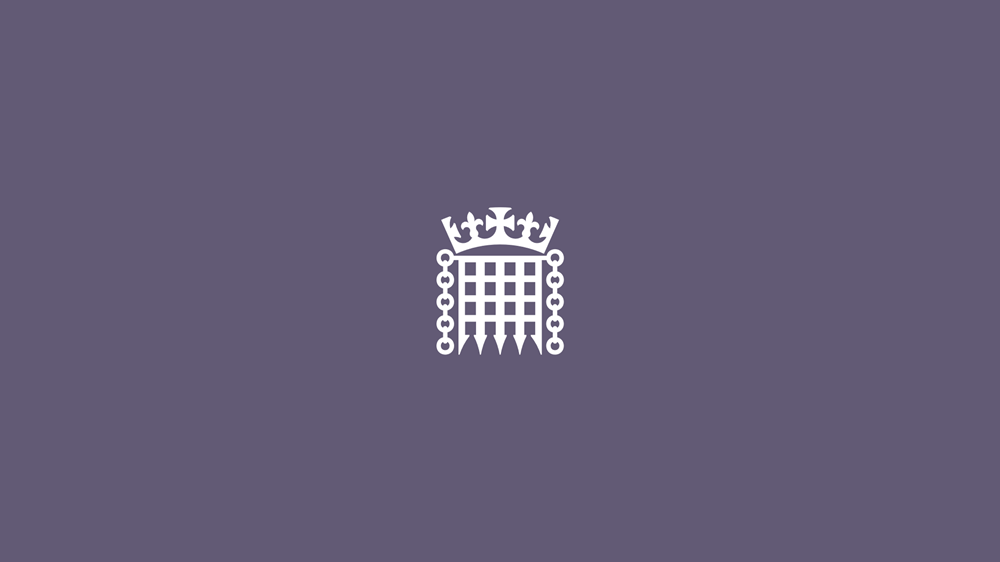Life, death and everything in between
23 May 2011 (updated on 23 May 2011)
The Death Warrant of Charles I, the Bill of Rights and three documents relating to the suffragette movement from the Parliamentary Archives have today been inscribed on the UK’s Memory of the World Register, a globally recognised list of documentary heritage which holds cultural significance specific to the UK
The Death Warrant of Charles I and the Bill of Rights have been inscribed individually, with the suffragette documents forming part of an eight-item inscription in a joint bid from the Parliamentary Archives and The Women’s Library at London Metropolitan University.
Each of the items is unique and marks a significant point in British history, a fact which has been recognised by UNESCO and resulted in the inscription on the Register.
The list of items that have been inscribed is:
- The Death Warrant of Charles I 1649
- The Bill of Rights 1689
- A Women’s Freedom League banner, unfurled in the House of Commons in 1908
- The 1913 Prisoners Temporary Discharge for Health Act (Cat and Mouse Act)
- The Representation of the People (Equal Franchise) Act of 1928
Caroline Shenton, Clerk of the Records at the Parliamentary Archives, said:
“It is fantastic that these archival documents have been recognised by UNESCO. They are some of the most significant items from our political history and are truly irreplaceable. The Death Warrant of Charles I is perhaps one of the most dramatic of all records relating to English history, whilst the suffragette banner and subsequent Acts tell the story of the suffragette movement and acknowledge the significance of the women’s struggle for equality – one of the key movements in modern western history.
“And as well as being the closest thing the UK has to a written constitution, the Bill of Rights has huge international significance as a model for documents such as the US Bill of Rights 1789 and the European Convention on Human Rights. The historical importance of this exceptional document extends far beyond the UK and its impact is still incredibly significant today.”
The nominations have been supported by historians and constitutional experts from institutions including the History of Parliament Trust, The Royal Courts of Justice and the Universities of Cambridge and Princeton.
The items from the Parliamentary Archives that have been inscribed are:
The Death Warrant of Charles 1
The document, a flat parchment containing seals and signatures, is handwritten in iron gall ink and led to the execution of Charles I and subsequent rule of Oliver Cromwell, one of the 59 signatories. Charles was tried in the House of Commons and executed on 30 January 1649, outside Banqueting House in Whitehall. Following the Restoration of the monarchy in 1660, the Death Warrant was used to identify the commissioners who had signed it and prosecute them for treason. Even the signatories, who had died, including Cromwell, were dug up and their bodies hanged. The House of Lords ordered the return of the Death Warrant from Charles’ executioner who was imprisoned in the Tower of London. It was returned on the 31 July 1660 and it has been in the custody of Parliament ever since.
The Bill of Rights
The Bill of Rights 1689 is an iron gall ink manuscript on parchment. It is an original Act of the English Parliament and has been in the custody of Parliament since its creation. The Bill firmly established the principles of frequent parliaments, free elections and freedom of speech within Parliament – known today as Parliamentary Privilege. It also includes no right of taxation without Parliament’s agreement, freedom from government interference, the right of petition and just treatment of people by courts. The main principles of the Bill of Rights are still in force today - particularly being cited in legal cases – and was used as a model for the US Bill of Rights 1789. Its influence can also be seen in other documents establishing the rights of humans, such as the United Nations Declaration of Human Rights and the European Convention on Human Rights.
Women’s Freedom League banner, unfurled in the House of Commons
The banner is comprised of a printed handbill pasted onto cloth and mounted on bamboo sticks. Suffragettes smuggled the banner into the Ladies Gallery of the House of Commons in 1908, passed it through the grille that covered the window and unfurled it into the debating chamber. During this incident, two of the women chained themselves to the grille and had to be cut free. The banner is seen as being both a literal and metaphorical representation of the protests made by women behind the grille.
Prisoners Temporary Discharge for Health Act 1913 (Cat and Mouse Act)
Many women imprisoned during the suffrage campaign went on hunger strike. These women were force-fed by prison doctors, who would insert a tube into their mouths, forcing it down their oesophaguses and pouring liquidised food into their stomachs. However, in 1913 the Government changed its tactic and the Cat and Mouse Act was rushed through Parliament. It allowed for prisoners on hunger strike to be released when they became weak or ill but, when sufficiently recovered, to be re-imprisoned – hence the name Cat and Mouse Act.
Representation of the People (Equal Franchise) Act 1928
In 1918, women over the age of thirty were given the right to vote which meant they were still not on an equal footing with men. Full equality only came 10 years later, on 2 July 1928, with the Equal Franchise Act, when women became the majority of the electorate.
Further information
You can see the full inscriptions on the UNESCO UK website.
- UNESCO UK Memory of the World Register [external website]
Further historical background to these documents is available in the Living Heritage ages:
The Parliamentary Archives holds and provides access to the several million historical records relating to Parliament, dating from 1497.
